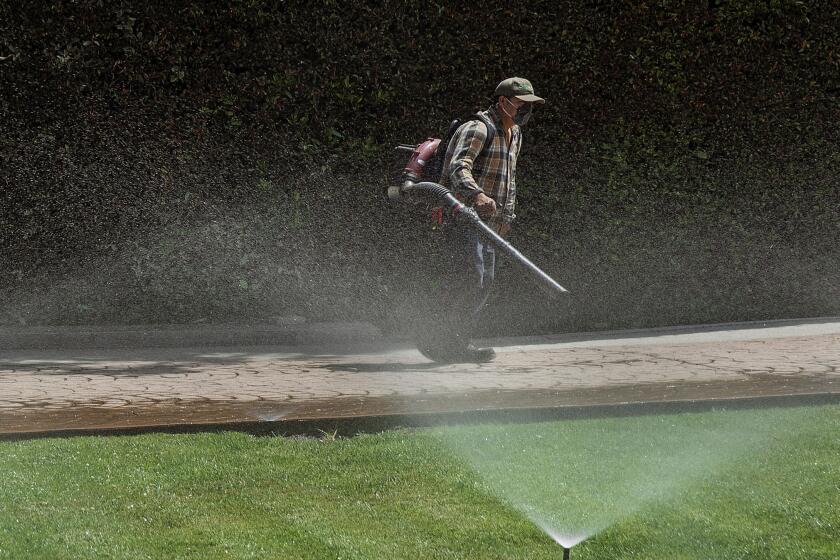INSIDE & OUT : Spills Can Be Deadly for Parquet Tiles
- Share via
Q. We refinished an oak parquet floor in our dining room about a year ago. It looked beautiful, but as soon as the weather warmed up, the floor began to buckle in several areas. What causes this, and what’s the remedy?
W.H.
Garden Grove
*
A. Probably the most common reason for a wood floor to buckle is that water has soaked into it from the top of the floor, says Steve Hix of Aaron Anthony’s Floor Coverings in Anaheim. When a floor is installed, a moisture barrier is generally applied underneath to prevent moisture from coming up, but wood floors that are in or near kitchens are particularly susceptible to water spills.
I hope that you still have some extra parquet tiles that were left over after the floor was installed or that the tiles are still manufactured so the damaged ones can be replaced.
*
Q. I’d like to change the color of some kitchen appliances, including a dishwasher, refrigerator and range from gold to taupe or beige. Can I spray-paint them? If so, what kind of paint should I use?
J.M.
Newport Beach
*
A. You can spray-paint metal appliances, but remember that you’re not going to get the kind of finish that was originally on them, says metal finisher Rudy Martinez of Costa Mesa. Appliances generally have a baked-on enamel finish that is extremely tough to chip or scratch. With an appliance that’s simply painted, you’re not going to get that protective finish and you’ll probably find it’s easily scratched. The range is particularly susceptible because it’s subjected to heat.
Painting the dishwasher or refrigerator may work better for you. Look for paints recommended for metal surfaces. You’ll need to sand the enamel and clean it, then paint over it with a metal primer. If you decide to use a spray-paint, make sure you spray lightly and let the paint dry between coats. With regular paint, apply light, even coats, sanding between each coat.
*
Q. Two years ago, we papered one wall in our bedroom, and while it looks nice, we got some of the paste on the two adjacent walls. The paste has turned brown with time, and it has created lots of ugly streaks and smudges on the wall. Can this be removed, or do we have to sand and paint them off?
B.L.
Yorba Linda
*
A. There are several wallpaper paste removers on the market that are available at most paint and hardware stores, says Rich Zelle of Hal’s Paint & Decorating in Fullerton. These can either come in a liquid or a crystal form that you have to mix with water and dissolve before applying them with a sponge or brush. If these are unsuccessful, you might try a solvent-like paint thinner. If it’s still not coming off, then it’s probably time to sand the spots smooth and paint over them.
*
Q. I’m considering making a partition wall made of glass blocks, and I’d be interested to know what kind of reinforcement is used to make glass block wall sturdy.
P.N.
Cypress
*
A. There are two different types of reinforcement for glass blocks, says contractor Mike Ellits of Placentia. There are spacer guides, which hold the blocks apart and act as a reinforcement. These fit in where the cement is inserted, and they can’t be seen. Dura-wall is the other type, and it’s made of two pieces of wire that are welded together and placed between the block. Usually the spacer guide is used since that keeps the blocks in the correct space.
*
Q. Is there any way I can shave a little off the top of my door with a plane and not have to remove it from the hinges?
K.K.
Huntington Beach
*
A. Make sure the door is completely steady and immobile, says woodworker Sam Reeves of Buena Park. This will work if you know there’s just a small spot where the door is sticking on top. If most of the top needs to be trimmed, it’s probably best to remove the door.



